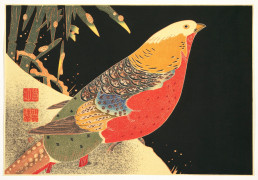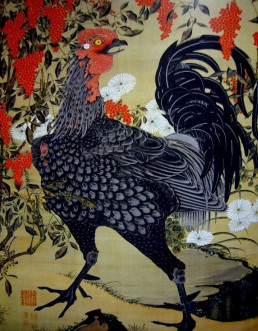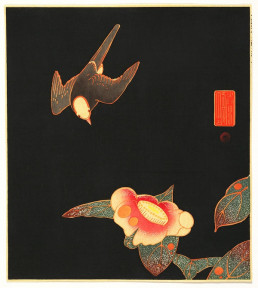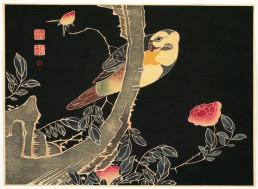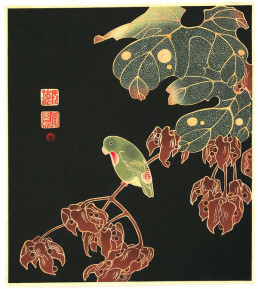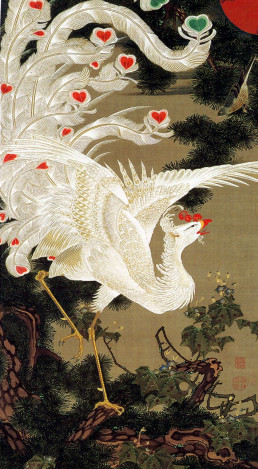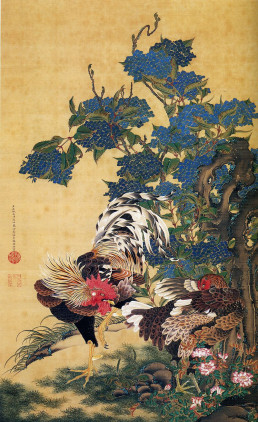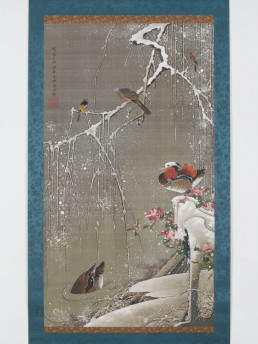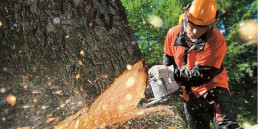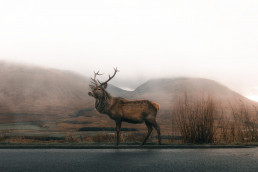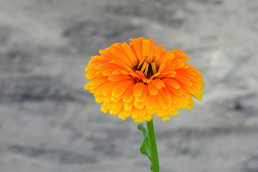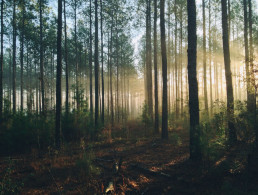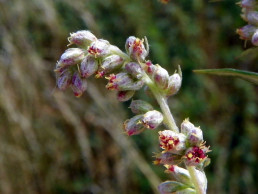The Noosphere Is Here
The Noosphere Is Here
The great Jesuit anthropologist, Pierre Teilhard de Chardin, has long fascinated us with his vision that the world would evolve into a “noosphere,” [1] a great web of consciousness enveloping the Earth. It seemed a lovely but distant ideal, yet the Digital Revolution has now made that dream a reality. The noosphere is here today, and it promises to transform our lives, our work, social institutions, the global order, and our very minds and souls.
Not too long ago, we relied on telephones and newspapers to communicate. We now use two billion personal computers, 14 billion cell phones and laptops, and two billion TVs. The information flows through 30 million Internet servers, 3,500 space satellites and almost one million miles of undersea cables. This planetary layer of digital connection knits eight billion people into a living overlay of thought – the noosphere.
Although the world has an abundance of communication, it is not a very happy place. Just as the Gutenberg printing press unleashed a flood of information that led to wars and the Protestant Reformation, today’s deluge of knowledge has not stemmed a “post-factual” wave of nonsense, government gridlock, raging pandemics, the climate crisis and other global threats. I suggest that a “global consciousness” able to handle such threats is likely to emerge soon. But, in the meantime, the noosphere has highlighted the limits of knowledge.
Beyond Knowledge
You would think we should have been enlightened by the past two decades of the Knowledge Age, so why do people seem badly misinformed, emotional and unreasonable? Despite the great evidence readily available, many do not believe in evolution, climate change, vaccination and other established science.
Even national policies are often based on emotions, as when the English left the EU and Americans elected President Trump. Political “rebellions” like this are common, of course, with their own logic and patriotic goals. But today, the technology can amplify disinformation. Trump, for instance, gained power using digital media to deny inconvenient facts as “fake news” and “conspiracy theories.” An entire cottage industry has sprung up to warn of this “Assault on Intelligence,” “The Death of Truth,” “A World Without Facts” and “Truth Decay.” [2]
It does not help that large parts of the public embrace this confusion. TV and the Internet have produced what has been called “the dumbest generation” with a disregard for general reading in favor of news sources echoing their beliefs. [3] Here are some choice bits of willful ignorance:
- The US ranks near the bottom of nations whose citizens believe in evolution, with less than 40 percent saying they accept the science. [4]
- Two-thirds cannot name the three branches of government. [5]
- As of early 2021, more than 70 percent of Republicans still believe the presidential election was stolen, after this was discredited by the courts and Republican officials themselves.
Norman Lear, the famous American TV producer, said: “We just may be the most-informed, yet least self-aware people in history.” [9]
This dilemma poses one of the great ironies of our time. The Digital Revolution has created a wealth of knowledge that is almost infinite. The smartphone alone has made the world’s store of information available at the touch of a finger. There is no shortage of knowledge, but the power of facts is badly limited. Knowledge cannot tell us what is worth doing, or what is right morally and what is wrong. Rational logic does not explain why people are altruistic or selfish, kind or cruel, enlightened or ignorant. Knowledge can never replace love, wisdom or a guiding vision.
The rule of unreason pervades life, and it is rampant in politics. The US government, for instance, has been locked in stalemate for decades, though Congress has more knowledge than it can handle. Emotional issues like abortion, gun control and immigration supported by strong majorities have been studied to death. Still, gridlock persists because of conflicting values, reluctance to compromise, and hunger for power. Senator Ben Sasse worried, “We are living in an America of perpetual adolescence.” [10]
This political stalemate is largely responsible for the poor US response to the coronavirus pandemic. China, Singapore, South Korea and other Asian nations weathered the storm reasonably well. But the US mismanaged it so badly that Americans fear structural weaknesses in government could inflict more damage from other crises. The pandemic brought these systemic flaws on vivid display for all to see. People are frightened and searching for solutions.
What is going on here? Why is the US, the most prosperous nation in the world, so inept? How can great knowledge produce such misguided behavior?
These problems can be best understood as the passing of the Knowledge Age and the opening of a new frontier – consciousness itself. A “beyond knowledge test” helps clarify the role of consciousness. If some problem remains unresolved due to values, beliefs, self-interest or other subjective issues – climate, abortion, gun control, for example – the solution lies beyond knowledge. This simple test highlights how the disorders that plague our time are not rational problems to solve by reason. They involve all the messy mental baggage of normal people, so they must be addressed by altering consciousness. That is where the problems lie, and it is also where the solutions are to be found.
This is a bold claim, but that is roughly how the shift to a world of knowledge looked when the Information Revolution began a few decades ago. Back when computers filled rooms, I recall telling people that we were entering a world of personal computers, and the typical response was, “Why would anyone want a personal computer?” Yet in 2000, PCs were everywhere, books on knowledge became rife and the majority of jobs involved managing knowledge. I am equally confident that an Age of Consciousness is opening up today, and we simply do not yet understand this intriguing new frontier.
Beneath this tectonic shift in consciousness is the driving force of artificial intelligence, the most powerful agent of change today. Sundar Pichai, CEO of Google, said “AI is probably the most important thing humanity has ever worked on … more profound than fire or electricity.” [12] The advance of AI is automating knowledge work, threatening to eliminate roughly half of all jobs and posing one of the most perplexing questions of our time: What lies beyond knowledge?
I have struggled with this problem for years, and the result is Figure 1 showing the “Life Cycle of Evolution (LCE).” Similar graphs have been sketched in general terms, [13] but this is the first to plot the long-term evolutionary trend using real scales and real data. The logarithmic time scale is needed to encompass the billions of years at the start of life, as well as just decades today. Without a log scale, the shape of the LCE would not be recognizable; the trendline would run flat and make a sharp 90 degree turn straight up.
Figure 1
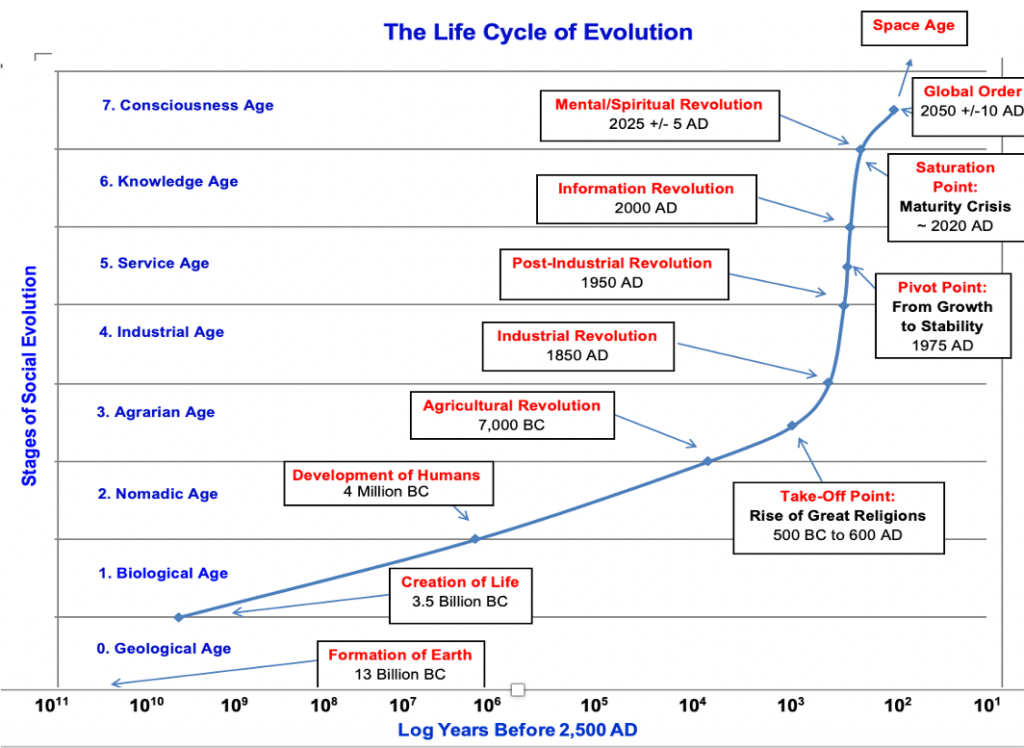
Above the fray, there is a direction to this accelerating evolutionary process, and the logical next step is consciousness. Roughly four million years were needed to found Agrarian Civilizations. Nine thousand years to invent Industrial Society. One hundred years for the Post-Industrial Era. Five decades to a Knowledge Age. And the past 20 years to an Age of Consciousness.
Today, the world is poised at the cusp of transformation from a society based on knowledge to one guided by consciousness. This extraordinary acceleration through previous stages reveals how the planet suddenly came alive in a flash of awareness. The entire rise of civilization occurred in an extremely tiny fraction of one percent in the LCE. Historian Arnold Toynbee foresaw it as the “etherealization of life.” [14] Teilhard de Chardin envisioned planetary consciousness to be the natural apex of evolution – the Omega Point. [15]
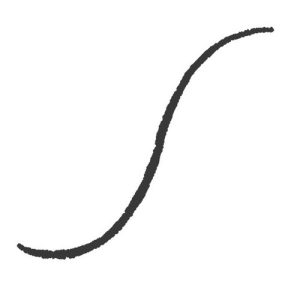 The great S-curve formed by these eras is the universal symbol of the lifecycle. All living systems pass through this same process of birth (start of the S-curve), growth (upward phase), and maturity (leveling off) – a culture of bacteria, a growing child or the life of a planet. From this systems view, the Global MegaCrisis is an infinitely larger version of the same crisis of maturity that transforms teenagers into adults. Anyone who has raised children knows that teens may be fully grown physically and “know everything.” But the typical teenager has not learned to control their impulses, struggles with inner doubts and can’t cope with a confusing world.
The great S-curve formed by these eras is the universal symbol of the lifecycle. All living systems pass through this same process of birth (start of the S-curve), growth (upward phase), and maturity (leveling off) – a culture of bacteria, a growing child or the life of a planet. From this systems view, the Global MegaCrisis is an infinitely larger version of the same crisis of maturity that transforms teenagers into adults. Anyone who has raised children knows that teens may be fully grown physically and “know everything.” But the typical teenager has not learned to control their impulses, struggles with inner doubts and can’t cope with a confusing world.
At some point, the stress becomes so severe that most teens eventually find the courage to grow up and become responsible adults. In a roughly similar way, the MegaCrisis is humanity’s challenge to become a mature civilization. The world is being forced to grow up and to develop a sustainable global order – or perish. This passage to maturity is more than a historic challenge; it is also a historic opportunity. Like adolescence, surmounting this painful process can lead to a better future. How could we let this singular moment pass?
Triumph of Human Spirit
Shifts in public consciousness are transforming the major organs of society – government, business, universities, religions and other institutions. In each case, a small avant-garde is quietly bringing a mature awareness to these varied facets of public life.
Many doubt dramatic change is possible. However, in 2020, the Black Lives Matter movement began shifting attitudes around the world, illustrating that consciousness is ever-changing. This push for racial justice is led by young people across the political and racial spectra, the cohort that favors global consciousness. It is reminiscent of the Me Too movement that outed sexual predators, and the passing of gay marriage laws a few years ago. Big change arrives when the time has come.
The power of global consciousness provides the key to resolving the multiple crises of today. Each stage in social evolution has been propelled by revolutions – the Agrarian Revolution, the Industrial Revolution, Post-Industrial Revolution and, most recently, the Information Revolution. As my graph of the LCE lays out visually, we are now in the beginning throes of a “Mental/Spiritual Revolution” to kick-start the Age of Consciousness. In short, it appears the world is heading toward some type of historic shift in consciousness, a collective epiphany, a new mindset, code of global ethics or a spiritual revolution.
Civilization survived the fall of Rome, the Dark Ages, World Wars I and II, and a cold war bristling with nuclear weapons, and it seems likely to survive the Global MegaCrisis.
Such heroic change may appear daunting, especially at a time when hostilities seem endless and environmental disaster looms. That is often the case before upheavals. Nobody thought the Soviet Union would collapse until it actually did.
The reason this claim seems optimistic, perhaps even foolhardy, is that we have no experience in global consciousness. Huddled in our small section of the universe, humans have little conception of planetary evolution, much less the transition to a unified world. Our understanding is roughly similar to that of a naïve person who first witnesses the agony of a human birth or a teen struggling to adulthood. Without previous experience, these painful transitions would seem awful, too hard to bear. Yet they are entirely normal and usually successful.
So too could our passage to global maturity develop into a fairly normal transition in a few years. The LCE graph shows that a Mental/Spiritual Revolution is poised to arrive about 2025 or so. This historic shift to an unknown era requires a new conceptual framework to map the terrain, a vision to provide inspiration and principles that work.
A mature global order will still bear the normal human failings, but it will make our current strife look as primitive as the brutal reign of kings in the feudal ages. This may sound too good to be true, yet these trends suggest we will see the beginnings of a unified planet over the next decade or so, and the triumph of human spirit, once again.
References
[1] Pierre Teilhard de Chardin, The Phenomenon of Man (New York: Harper, 1955)
[2] Hayden, The Assault on Intelligence (New York: Penguin, 2018); Anne Applebaum, “A World Without Facts” (Washington Post, May 20, 2018); Jennifer Kavanagh and Michael Rich, Truth Decay (Santa Monica: The Rand Corporation, 2018)
[3] Mark Bauerian, The Dumbest Generation (New York: Penguin, 2008)
[4] Ker Than, “US Lags … Acceptance of Evolution” (Live Science, Aug 11, 2006)
[5] Susan Jacoby, The Age of American Unreason (New York: Pantheon, 2008)
[6] Elizabeth Kolbert, “Why Facts Don’t Change Our Minds” (The New Yorker, Feb 27, 2017); Yuval Harari, “People Have Limited Knowledge. What’s the Remedy? Nobody Knows” (New York Times, Apr 18, 2017)
[7] Tobias Beer et al., “The Business Logic in Debiasing” (McKinsey, May 2017)
[8] Harari, “Why Fiction Trumps Truth” (The New York Times, May 24, 2019)
[9] “Norman Lear calls for leap of faith” (The New Leaders, May/June 1993)
[10] Ben Sasse, The Vanishing American Adult (St. Martin’s, 2017)
[11] Ishaan Tharoor, “The Man Who Declared ‘The End of History’ Fears for Democracy’s Future” (Washington Post, Feb 9, 2017)
[12] World Economic Forum (Jan 24, 2018)
[13] For instance, the field of “big history” has studied similar time scales. See ibha.wildapricot.org (June 2, 2017)
[14] Arnold J. Toynbee, A Study of History (Oxford Univ. Press, 1960)
[15] Pierre Teilhard de Chardin, The Phenomenon of Man (New York: Harper Perennial 1976)
[16] “Quote of the Day” (New York Times, Sep 13, 2019)
[17] Stephen Hawking, “This Is the Most Dangerous Time for Our Planet” (The Guardian, Dec 1, 2019
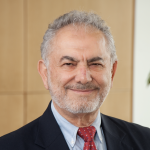
About William E. Halal
William E. Halal is Professor Emeritus of Management, Technology, and Innovation at George Washington University, Washington, D.C. Halal’s work has appeared in numerous journals and he has produced six books: The New Capitalism (Wiley, 1986), Internal Markets (Wiley, 1993), The New Management (Berrett-Koehler, 1996), The Infinite Resource (Jossey-Bass, 1998), 21st Century Economics (St. Martin’s Press, 1999), and Technology’s Promise (Palgrave Macmillan, 2008).
Halal studied engineering, economics, and the social sciences at Purdue and Berkeley. Previously, he was a major in the U.S. Air Force, an aerospace engineer on the Apollo Program, and a Silicon Valley business manager. He serves on advisory boards of the World Future Society and other organizations, and his work has received prominent recognition.
The World of Itō Jakuchū
The World of Itō Jakuchū
These beautiful polychrome woodblock prints are Meiji era copies (ca. 1900) of original designs (ca. 1771) by Itō Jakuchū (伊藤 若冲, 2 March 1716 – 27 October 1800), a Japanese painter of the mid-Edo period notable for his striking modern aesthetic. Born in Kyoto, Jakuchū was strongly influenced by Zen Buddhist ideals throughout his life. He was considered a koji (a lay brother) and he named his studio Shin’en-kan, which translates as “Villa of the Detached Heart (or Mind)”, a phrase included in a poem by the ancient Chinese poet Tao Qian. (Public Domain Review)
Itō Jakuchū painted during the mid-Edo period when Japan had closed its doors to the outside world. Many of his paintings concern traditionally Japanese subjects, particularly chickens and other birds. He is said to have been very calm, restrained, and professional. He held strong ties to Zen Buddhist ideals, and was considered a lay brother (koji); but he was also keenly aware of his role within a Kyoto society that was becoming increasingly commercial.

Itō Jakuchū was the eldest son of Itō Genzaemon, a Kyoto grocer whose shop, called Masuya, lay in the center of downtown, in the Nishiki food district. Jakuchū ran the shop from the time of his father’s death in 1739 until 1755, when he turned it over to one of his brothers.
His training in paintings was mostly derived from inspirations from nature and from examining Japanese and Chinese paintings at Zen temples. Though a number of his paintings depict exotic or fantastic creatures, it is evident from the detail and lifelike appearance of his paintings of chickens and other animals that he based his work on actual observation.
Jakuchū befriended Daiten Kenjō, a Rinzai monk who would later become abbot of the Kyoto temple Shōkoku-ji. Through this friendship Jakuchū gained access to the temple’s large collection of Japanese and Chinese paintings, and gained introduction to new social and artistic circles. It is thought that Daiten may have been the one to first conceive of the name “Jakuchū”, taken from the Tao Te Ching and meaning “like the void”. (Wikipedia)
About Public Domain
Copyright.gov explains the public domain as follows: “A work of authorship is in the “public domain” if it is no longer under copyright protection or if it failed to meet the requirements for copyright protection. Works in the public domain may be used freely without the permission of the former copyright owner.” Because such works can be used without first seeking permission, they are ideal for many projects, particularly those that will extend beyond educational uses.
Seeking “Ssshhh”
Seeking “Ssshhh”
“Ssshhh.” Something deeper awaits us at the still, center point, something primordially embodied and profoundly spiritual. It breathes us into being. It blesses us as part of a cosmic “We.” It is the quietude borne of creation’s song, the spiritual sojourner’s taproot, and Earth’s primary language of love. It is hummed, buzzed, chanted, and howled in the native tongue of other-than-human kin. Without creation’s sacred mantram, humanity weeps, soulless and despondent, spiritual zombies cut off from the web of life. Without communal quietude, creation’s expansive stillness is lost to the wider “We.”
It has been one year since the 2020 derecho decimated this part of the Heartland. The 90,000 sq. mile swath of intense, sustained winds devastated over 65% of the mature tree canopy in the Cedar Rapids corridor. Immediately following the storm, a deadened void enveloped us. The horrifying wake had created an area-wide arboreal hospice bereft of nature’s symphony. Normally, this Midwestern oasis thrums with a vibrant natural chorus, but the derecho’s immediate aftermath felt like a nightmarish, silent scream. Centuries-old arbor elders were uprooted and mangled, causing massive eco-system upheaval. Our collective animate soul withered. It felt like a massacre, one that required sacred space for ritualized grieving. What we experienced instead was a tempestuous cacophony, the onslaught of capital N – NOISE.
The perennial presence of high-powered machinery besieged us for nearly a year while the roar of saws and chippers continued their grisly dismemberment. Quiet walks in the detritus fields were moonlight affairs, as we surrendered the daytime hours to the grinding of every visible stump and brush pile. It was an endless realm of the chainsaw, replacing “Who cooks for you?” owl-song with bone-grinding, industrial screech.
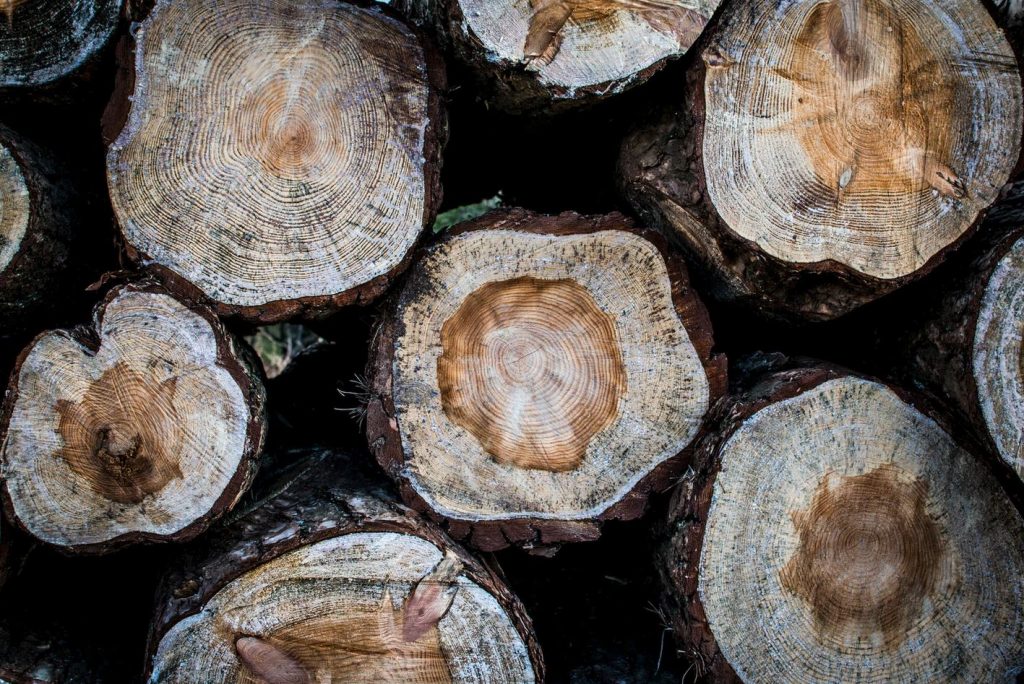
As the thundering racket of high ton capacity cranes, dozers and excavators finally ebbed, spring offered the rhythmic calm of a soothing embrace. A gentle respiratory exchange animated the magnificent dance, breathing in, breathing out, through tremulous bent-over hickories and resurgent maples. A healing impulse stirred in the prairie breezes whirring through the surviving shredded pines and the strangely muted pin oaks. The sweet song of the cardinal and goldfinch and the mesmerizing cadence of cicadas and bullfrogs began their joyful swell. Softly, soulfully, the gentle melody summoned Earth from her slumber and buoyed us from our spiritual malaise. Dandelions pirouetted with springtime’s whoosh of butterflies ascending on a balletic breeze. Earth’s quietude was re-emerging without fanfare, and it felt like the healing balm of Gilead.
One lesson we learned from the derecho was how much we need the quietude of creation. Even without the trauma of screeching and pounding during a protracted clean-up from a natural disaster, we are immersed in normalized soundscape mayhem. Decibels (dBs) mark the increments of the crescendo of auditory assault. A soft whisper is at about 30 dB, a loud rock concert might be 120 dB (about the same as a crack of thunder), and a jet engine around 150 dB. Fireworks are about 150-175 dB. 150 dB is said to be the threshold for causing human deafness, and 185-200 dB is said to be the threshold for human death.1 What is our communal global threshold? What does human noise pollution do to the wider “We?”
Many have lamented the desecration of Earth’s quiet places, the communal natural sanctuaries where quietude is revered.2 Noise pollution and its effects on humanity is widely documented.3 Sleep disorders, stress, muscular, pulmonary, and neurological maladies are evident when excessive noise (exceeding 45 decibels) dominates human perception.4 Our land and ocean-dwelling wild-kin also suffer egregiously when human noise interferes with communication, altering a sense of location, group identification, reproductive health, food availability and habitat suitability.5 Noise pollution poses grave threats to the inter-breathing, inter-dependent denizens of the biosphere and the blue marble’s pacific ethos. How might we relearn the art of creation’s hushed lullaby?
In the liminal space of one global spin, sacred soundscape serenades its whirling. Sunrise silently proclaims “Hallelujah!” for a fragile planet suspended in the last moment of its receding darkness. Sunset is a Great Amen, the final “Thanks!” for the day’s exquisite joys. Two sacred moments of each day summon us to quietude, one to awaken us to purpose and desire, one to swaddle us with gratitude and contentment. Quietude itself is the riveting fermata of a day’s journey. Access to quietude is a communal spiritual need, and with good reason: we require its healing energy to stimulate our passion for creativity and connection. It is the foundational allurement and repository of meaningful relationship, of love, respect and intimacy. It is perhaps an essential elixir for the spiritual sojourner.
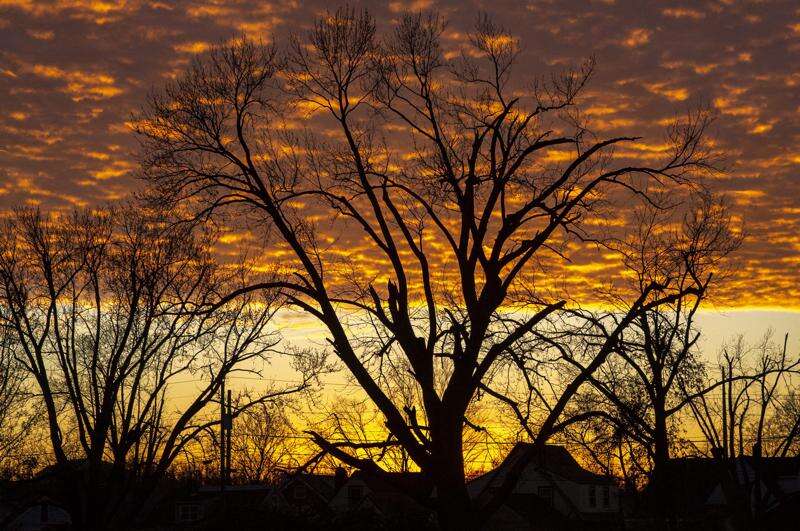
Quietude often enshrines moments of heightened spiritual awareness, especially in our encounters with the Mystery we know as Love. Witness Moses and the burning bush (Exod. 3:1-5), or the “small, whispering sound” that drew the prophet Elijah (1 Kgs.19:11-13). Quietude is an aperture for the Holy, as the Psalmist proclaimed, “Be still and know that I am God” (Ps. 46:10). Creation is not restricted space for prophets and saints alone to retreat into stillness. If we are to hear the cosmic refrain and the divine whisper, we must ensure that all are welcome in Earth’s cathedral. When we enter the quietude of creation, we embrace the quiet of our own interior soundscape. There we begin to learn this primary language of Love.
This is why we are seeking “Ssshhh,” especially in this time of the Great Turning, the global shift from a full-throttle Anthropocene to an emerging, post-human Symbiocene. Is quietude a communal spiritual good in this time of transition? The wider “We” insists that it is. Creation is awash in our noisy flotsam. We can’t breathe; we can’t catch our communal breath. Our reflective selves cannot calm, cannot settle, cannot breathe into the present moment with mindful awareness, so saturated are we with exterior and interior noise. Quietude heals and connects, as wizened guides in many indigenous spiritual and religious traditions have known for centuries. Western science is coming into this awareness only recently.6
Quietude stores potential energy; it is a pulsating pre-cursor to creativity and more complex union. We are longing for the quietude, craving it with every synapse of our over-stimulated, deafened and deadened sensorium. Creation cannot recover from our loud assault without a bit of hushed reverence. The dissonance of omnipresent noise is shredding the web of life. If we learn the art of Earth’s own expansive stillness, we may recover access to the still, center point where we are grounded, and where we are One. “Ssshhh.”
References
[1] “What Noises Cause Hearing Loss?” Centers for Disease Control and Prevention, National Center for Environmental Health, https://www.cdc.gov/nceh/hearing_loss/what_noises_cause_hearing_loss.html
[2] Terry Ward, “Discover the Planet’s Last Few ‘Naturally Quiet’ Places, National Geographic, June 17, 2020, https://www.nationalgeographic.com/travel/article/discover-the-planets-last-few-naturally-quiet-places
[3] “How Humans Are Polluting the World With Noise,” Deutsch Welle (DW.com), March 13, 2018, https://www.dw.com/en/how-humans-are-polluting-the-world-with-noise/a-42945885
[4] Clean Air Act Title IV Noise Pollution Overview, Environmental Protection Agency, https://www.epa.gov/clean-air-act-overview/clean-air-act-title-iv-noise-pollution
[5] Jaime Clifton-Ross, “Human-Created Noise Pollution Impacts Wildlife,” February 5, 2020, Nature Conservancy Canada, https://www.natureconservancy.ca/en/blog/human-created-noise-pollution.html; Linda S. Weilgart, Ph.D., “The Impact of Ocean Noise Pollution on Marine Biodiversity,” https://awionline.org/sites/default/files/uploads/documents/Weilgart_Biodiversity_2008-1238105851-10133.pdf
[6] Daniel A. Gross, “This is Your Brain on Silence,” August 21, 2014, https://nautil.us/issue/16/nothingness/this-is-your-brain-on-silence

About Laura A. Weber
Laura is delighted to serve as Associate Director and Retreats Coordinator at Prairiewoods. Her focus at Prairiewoods represents a natural evolution of her passion for the Great Work of renewing Earth and accompanying spiritual seekers as they deepen their relationships with Source of All Being, self and all creation. She loves life’s gentler meanderings—with occasional lapses for baseball and jazz.
Lord of the Forest | Good Fences
Lord of the Forest | Good Fences
Lord of the Forest
The buck hears my steps
…………..and huffs sharply
………………………..just beyond the leaves—
shimmering aster,
…………..viburnum purpling,
………………………..beech, maple, and oak.
Does would have leapt
…………..up and away,
………………………..tails fluttering.
He stays. He does not care
…………..to be disturbed
………………………..in his ruminations.
Beyond the green curtain,
…………..some have seen Christ
………………………..standing between antlers
or Cernunnos at rest,
…………..legs folded like a yogi.
………………………..But the buck is what he is,
an old god getting older,
…………..point by point,
………………………..his antlers holding
summer’s canopy,
…………..falling in deep winter
………………………..like broken branches.
You will not see him
…………..in the glassy eyes of effigies
………………………..mounted on walls.
He cannot be hunted down.
…………..He’s fathered generations
………………………..that scrape the ground,
his tears, his pheromones,
…………..wiped on twigs,
………………………..his velvet, bark-brown,
rubbed off on trees,
…………..his scat a declaration
………………………..in the midst of the trail.
I saw it without believing
…………..he was near.
………………………..I take another step.
He chuffs, louder, from his sanctum.
…………..The hair lifts on my arms
………………………..and I back up, then turn
from where his heart-shaped tracks,
…………..point the way
………………………..deeper into the woods.
Good Fences
Wolf Conservation Center, NY
Something there is that doesn’t love a wall—
I’ve seen the wolves here leap and climb chain-link
and claw dirt down to buried steel and stone.
But in this artificial wilderness
with acres for each pack and roadkill deer
shared out, no one fights for new turf or old.
So those who might have died by bite and slash
live long enough to watch neighbors raise pups
beneath New England oak and hickory.
The Rocky Mountain grays nap close beside
the Arctic wolf’s enclosure, and red wolves
from down south trot out when they hear his whine.
He watches them tail-flirt and form a tie,
and now and then flips sticks or leaves in the air
when they lope past. The lobo who lost his mate
play-bows then jumps and trots along the fence
across from a red wolf, who does the same,
ears perked. Lupine tai chi—no barks, no snarls,
only the thump of paws and soft panting.
Evolutionary. Like the way people changed
enough to make this place, where wolves find peace
and time to contemplate their kin and kind.
Come any day to hear their call and response,
one wolf setting off another, one pack
another, one species another, one
unbounded, communal howl echoing down
rocky slopes to the road. Stand at the gate,
look up and cup your hands around your mouth—
Sing oh-ohoo. Let your note waver, rise,
and fall. Sometimes they even answer you.

About Dana Sonnenschein
Dana Sonnenschein is a professor at Southern Connecticut State University, where she teaches literature and creative writing. Her publications include Corvus, No Angels but These, Natural Forms, and Bear Country. She lives in a house in the north woods, but you can find her on Facebook and Instagram.
The Potential of Grassroots Environmental Stewardship
The Potential of Grassroots Environmental Stewardship
The World Wildlife Fund’s (WWF) mission is “to stop the degradation of the Earth’s natural environment and to build a future in which humans live in harmony with nature….” In their Living Planet Report published in 2020, it is reported that global mammal, fish, bird and amphibian populations have declined by 68% in less than 50 years. Genetic degradation isn’t covered in the report.
The reality is that after 60 years at the forefront of conservation the WWF, and professional conservation in general, has failed to achieve their objective. Degradation of the natural environment, together with declines in genetic integrity across all species, resulting directly from environmentally hostile and destructive human activities, is both ubiquitous and of such severity as to suggest the distinct possibility that large animals in their natural habitats may be largely wiped out in coming decades.
Which is not to say that things might not have been worse without the efforts of conservation agencies, or that their failure to stem the tide of destruction is not to some extent understandable. Human numbers in my lifetime have gone from 2.5 billion to a staggering 8 billion, and in 2020 alone (notwithstanding COVID-19) births exceeded deaths by 80 million.
The approach to the unfolding catastrophe by conservation professionals appears to consist of what the medical profession might describe as symptomatic diagnosis and treatment. In other words, cause unknown and remedial treatment aimed at easing pain and symptoms—rather than eradicating underlying cause.
Carl Jung proposed that all human neurosis and psychosis stems from division from nature. And if Jung has it right, then does it not follow that in-depth understanding of the human condition that gives rise to environmental destruction, must precede and dictate remedial action? I’m not a psychologist but it would seem to me that division from Nature essentially triggers a loss of synchronicity between two distinct faculties of memory. The first of these being instinct and the second being reason.
Instinct can be defined as prenatal, genetic, evolutionary, or ancestral memory function. Reason is postnatal, experiential, or socially acquired memory function, and in Nature this dual memory function combines seamlessly to optimize survival prospects and transfer of advantageous genes. Division from Nature disrupts brain function synchronicity, resulting in suppression of instinct and elevated levels of dependence on or dominance of reason. Homo sapiens sapiens or wise wise Man is how we see ourselves. IQ is measured by reasoning ability alone. Instinct is generally seen as primitive if not superfluous.
What it amounts to is a muting of the guiding influence of an ancestral lineage that transcends species barriers—as a result of which we are disoriented and essentially lost. Domination of reason is also recognizable in the concept of dominion which in turn, is the soil in which the roots of private property lie buried, and out of which extends a spider’s web of dividing lines on maps that identify reason-based assumptions of superiority, and license to exploit and abuse our animal companions.
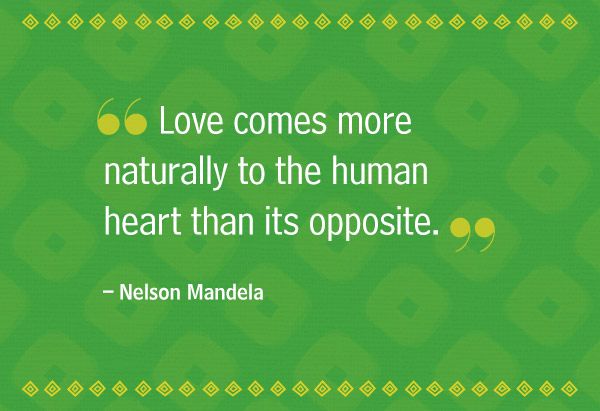 Nelson Mandela once said “…love comes more naturally to the human heart than its opposite.” It is so—for the simple reason that love is innate and derives from immutable genetic hardwiring or instinct. Dominion is the polar opposite of love. It is a socially acquired and consequently mutable worldview that, in the absence of counterbalancing instinct amounts to a reprehensible idea, passed on through childhood conditioning from one generation to the next. With symptoms known variously as a contest between good and evil; love and hate; male and female energy, or as an imbalance between reason and instinct—what is clear is the deep fracturing of the human psyche that springs directly from the tail of division from Nature.
Nelson Mandela once said “…love comes more naturally to the human heart than its opposite.” It is so—for the simple reason that love is innate and derives from immutable genetic hardwiring or instinct. Dominion is the polar opposite of love. It is a socially acquired and consequently mutable worldview that, in the absence of counterbalancing instinct amounts to a reprehensible idea, passed on through childhood conditioning from one generation to the next. With symptoms known variously as a contest between good and evil; love and hate; male and female energy, or as an imbalance between reason and instinct—what is clear is the deep fracturing of the human psyche that springs directly from the tail of division from Nature.
Exacerbating this altered state of consciousness and loss of balance, is a similarly debilitating condition that in the natural world promotes survival—but threatens survival when natural conditions are supplanted by artificial or virtual circumstances. What I’m alluding to is the inherently acquisitive nature of all primates. A monkey trap consists of a simple cage, baited with fruit and a hole in the top big enough to allow passage of the animals hand, but too small to allow withdrawal of hand clutching the fruit. Under such conditions greed overcomes reason and the monkey’s fate is sealed. And if a monkey will choose life at the end of a chain or death for the sake of a banana, then what chance do we humans have of moderating or abandoning our desire for houses, cars and smartphones? Material possessions we would literally die for—and almost certainly will.
Is there any hope? In the wake of COVID-19, coupled with increasing awareness of environmental destruction and climate change, is an emergent grassroots impulse to establish a new normal – and in that resides a glimmer of hope. Some years ago CapeNature (Western Cape Government) launched a highly successful land acquisition project called the Stewardship Programme. It offers incentives to land owners to make land available for conservation. These Contract Nature Reserves are designed to establish areas and inter-linked corridors of land to promote conservation—and it works.
To be a steward means to look after something. It also has a theological definition which means roughly the same thing: taking care of God’s work.
A slogan for the Stewardship Programme is “partnerships make it happen.” But what the CapeNature model lacks is a grassroots format – a united front whereby everyone (not just farmers) can become directly involved with conservation through various forms of collaboration.
This might include joint ownership of land for dual conservation and social purposes, with attendant recreational and residential (work from home) opportunities. A new normal where people can reconnect with Nature; partner with conservation professionals if necessary; work together to find ways of achieving harmony rather than conflict with Nature, and in doing so aspire to their true and full human potential. Healing the divisions of the past you might say—one barbed wire fence at a time.
As co-founder of an independent stewardship initiative some 20 years ago, that preceded the CapeNature model and successfully converted a 700 hectare commercial farm in the Cederberg area of the Western Cape to social and conservation purposes, my observations with respect to the potential of grassroots stewardship stem from hands-on experience. It’s a concept that has enormous potential for growth and facilitation of positive change. Despite which, professional conservation entities, sadly, tend to also conserve a preference for a top-down, leave-it-to-us-we-know-best approach and are resistant to unconventional ideas from outside the ranks of their profession.
Humans share a common ancestor with chimpanzees. All primates are highly intelligent and, just like us, their first response to anxiety, fear, and insecurity tends to be psychological denial. Held captive in a monkey trap, a primate’s life is often forfeited through its inability to accept the reality of its predicament. In the human domain it is frequently suggested that our relationship with Nature is “complex,” and it’s important to recognize that what lies behind this suggestion is denial, arising from an unwillingness or inability to accept the inconvenient truth of selfishness and obsessive need for materialistic gratification.
Grassroots stewardship might be described as the antithesis of the divide and conquer approach. It’s a holistic approach that seeks to unify the land and restore an ethical and respectful relationship between humans and all other life forms—in the context of ever-expanding farmlands, habitat destruction and genetic degradation that undermines the process of evolution itself.
There is no one-size-fits-all formula for stewardship projects and it is also not possible to touch on more than a few salient features in this essay. The Cederberg initiative referred to above was registered as a trust. Objective of the trust was to acquire land for social and conservation purposes. The 700 hectare farm acquired was on two titles which, in terms of compliance with agricultural zoning regulations, allowed for construction of 12 dwellings.
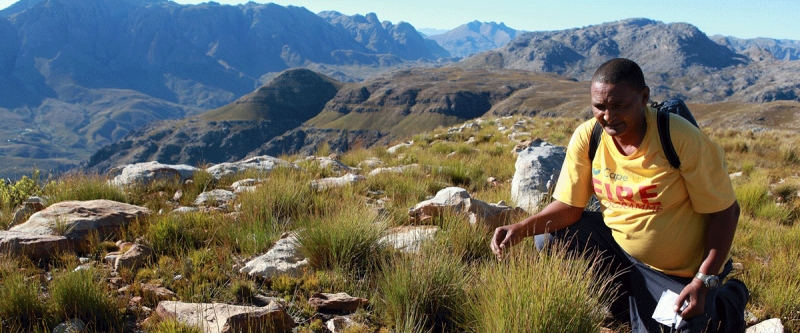
There were accordingly 12 beneficiaries who had access to the land as an undivided whole. Internal fencing was removed. Beneficiaries were allocated areas for their personal use and were entitled to build a house and establish a garden or practice micro farming if they chose to do so. Personal use could be recreational or permanent occupation at the entire discretion of the beneficiary.
These “plots” did not have separate title and on resignation by a beneficiary, immovable assets could be sold on but not the land occupied. In short, a moderation in terms of profit incentive, but full investment security and access through the power of partnership to a magnificent property abutting a wilderness area for a very modest and fully refundable contribution.
Obvious benefits to the natural environment aside, the participants in this project had few if any disadvantages in comparison to a more conventional “development” scheme. What they did have were several distinct and unique advantages—not least amongst which was becoming part of an exciting pioneering project, committed to positive social change and restoration of integrity with respect to humankind’s generally dysfunctional relationship with Nature.
Retaining the land as one undivided whole is perhaps the most fundamental requirement in any grassroots stewardship project. It is also possible in the Western Cape (through CapeNature) to rezone land as a Contract Nature Reserve. This secures the same protection status as a national park. Such rezoning in perpetuity means that the land is permanently safeguarded against usage for anything other than conservation purposes and, in the event of abutment with another conservation area, it opens the door for further unification and expansion of conservation land.
The term “economics” is defined in my dictionary as “a branch of knowledge concerned with the production, consumption, and transfer of wealth.” Arising as it does from a mind divided on itself and being also a product of socially acquired knowledge, largely devoid of counterbalancing wisdom and empathy, it is equally true to say that the business of economics is an anthropomorphic, supremacist, morally challenged branch of knowledge that views Nature as a commodity, composed of “resources” and “game” serving no purpose greater than consumerism and monetary profit.
Shaking off the spell cast by denial related to the destruction of 3.5 billion years of evolutionary progress and development (or what might equally be called God’s creation) and our collective complicity in that event, requires a long hard look in the mirror and conscious application of reason—followed by immediate and appropriate corrective action.
Prevailing economic models are neither ethical, immutable nor sacrosanct. Stewardship represents a viable and immediate means of expanding conservation areas. It affords the opportunity for people, at their own pace and discretion, to adopt simpler, less materialistic lifestyles, and to acquire more responsible attitudes and values. It represents a starting point for progressive social restructuring and a means of healing our broken relationship with Nature.
Grassroots stewardship is not only viable but offers ordinary people an extraordinary opportunity to “be the change you want to see in the world,” as Gandhi once proposed. It’s the right thing to do. It provides sanctuary for our animal companions. It makes you feel good about yourself; makes the ancestors happy, and it’s a giant leap forward with respect to transcending good intentions, and actually accomplishing a world in which humans live in harmony with Nature. It can be done and if ever there was a time to engage our allegedly superior faculties of reason and partner for change then that time is now!
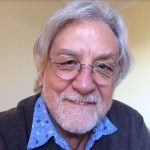
About Bruce McLeod
Bruce McLeod co-founded The Ubuntu Conservation Trust, a successful land stewardship initiative in South Africa in 1999. He is now retired and lives in Betty’s Bay, near Cape Town. He can be reached at bmcleod@iafrica.com.
Calendula Seed | Spirit Rise
Calendula Seed | Spirit Rise
Calendula Seed
Imagine these seeds into garland crown
golden flowers strung to celebrate
along the streets of ancient Athens.……“Mary’s
Gold” Catholics called them…….and you’ll see
crimson blooms sail past pyres to honor
those long gone…….hung as sacred décor
for Hindu deities along the Ganges.
Battlefields welcomed petals pressed
into open wounds to stop blood
from spilling into mud…….as hope
to aid healing…….antiseptic…….from sunshine
stored in those brief faces.…….In German soups
spun into salads of the Middle East
sweet engines of life grow and detoxify
worn ways.…….In the Philippines
they are “boho”…….bad smell…….planted to frighten
insects from eating rice and cassava.
Children sometimes plant such seed…….like these
you left for me…….to sprout toward light
to watch golden petals glow from dirt.
Spirit Rise
“At the hour of zazen I ate chocolate instead.”
―Kathryn Hunt, American poet, from Spirit Fox
Instead of joining the sangha for an hour
cross-legged on a cushion……I invite the dog
…………..out for a walk.
Golden poppies perk between cracks in the sidewalk.
Red ones wiggle in the wind.
We don’t talk much between crosswalks
though I smile at her eyes locked with mine
…………..before she trots to her next snuff on the other side.
I guide the dog though she’ll never understand
how a speck so light……a poppy seed
grows and leads me onward: Upright and brilliant
…………..I see it now……crimson and gold
………………………..petals on fire
……………………….when the sun has shone enough
……………………………………..and I am awake.
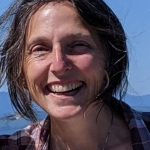
About Debra Wöhrmann
Debra Wöhrmann finds solace in writing—and inviting others to explore in words. She marvels at the mind’s impact on how we move in the world—and the body’s ability to wake the spirit and alter our way of seeing and being. She lives in Portland, Oregon, and enjoys wandering in the woods or along the coast with her husband and dog.
Humble Like the Earth
Humble Like the Earth
Please God, please Buddha, please Mother Earth—send me a vision.
It was my third day of sitting, singing, and sleeping in a circle of stones in the woods. I’d done plenty of silent meditation retreats but this was different. In a long brown shirt and baggy brown pants, bald-headed and bug-netted, my only task was to be still and to listen to the Earth.
I grew up in the suburbs at the southern tip of Canada. Reading under the tree in my yard was the extent of my connection to the great outdoors. My French and Scottish ancestors were settlers—no, colonizers—of Canada. Some of my great-grandparents lived on farms, but I doubt they had the time or the inclination to be still. I don’t know how many hundreds or thousands of years it had been since my people listened to the Earth.
When I dated a nature-enthusiast in my thirties and she took me on spectacular canoe trips, I just wanted to get to a monastery. So I left the partner and ordained into a Buddhist order in France, lush with plum trees and ritual. I found joy in simple things like a cup of tea. I met kind people. I even loved cooking and cleaning for a hundred people, sometimes more.
But the monastery was also a pressure cooker. My four-person dorm was the size of my former bedroom. The daily schedule ran from 5:45am until 9:30pm. There was always an elder around to correct the way I walked, talked, and thought.
Five years in the monastery brought me into a major depression, the first in my life.
In the summer of 2017, I took a year’s sabbatical. By springtime, I felt torn—go back and try again, or leave for good?
I felt drawn to stillness in the woods. A book on vision quests appeared on my Kindle without purchasing it. Friends who lived on a farm invited me to stay with them. I told another friend about this pull to be the woods. She told me to ask the land for guidance, offer thanks, and dedicate the experience for the good of all. So I set off.
On the first day, I hauled a 5-gallon jug of water and a tent to an opening in a cedar grove. I asked permission of the rocks to form a circle: some said yes and others said no. I honored their answers.
I lit a bundle of sage and thanked each person who had helped me in my life. The list grew as long as the day. Then I got quiet, asked for a vision, and listened.
Frogs and butterflies visited the circle by day. By night, coyotes howled from across the hay fields. I made friends with the mosquitoes and nestled in the hollow of the cedars.
I was still but there was no vision. What if I left the circle as confused as ever? By the third and final night, I began to beg.
Please God, please Buddha, please Mother Earth—send me a vision.
In the morning I awoke to the end of a dream. I was on the organizing team for a conference on spirituality and social justice, working with a team I loved. I had short, spiky hair and wore a mossy turtleneck sweater to lead the welcoming session. I felt completely alive: dynamic, funny, strong, and free.
It felt so ordinary I almost dismissed the dream but after writing it down I realized I had my answer. After three days of bathing in the planet’s electromagnetic field I could finally hear what I already knew.
I couldn’t go back.
As I packed up the tent, I fingered the black dirt on a tent peg. Humus. It reminded me of a precious lesson from the monastery. I was often told to be humble. I hated the word until I looked it up in the dictionary and found its Latin root was the same as humus, earth. My image of humility changed from being crushed into the ground to one of resting, like the Earth, at ease and beautiful. These days left me humbled and it felt good.
I gave my leave at the monastery but I wasn’t ready to release my vows or robes. I traveled for two more years, searching for another community. Only when the pandemic hit and I was forced to stop searching did I realize I didn’t need a new community. In March 2021 I held a simple ceremony, online, with friends and let go completely.
A month later I was co-facilitating an online course about racial healing and Dharma. I finished the session by playing Janelle Monae’s “Turntables” and got up to dance. When the song finished I waved goodbye to everyone and I caught sight of myself—short spiky hair, green turtleneck sweater, eyes alive, and full of joy.
Suddenly, I remembered my vision from the woods. My hand trembled as I closed the Zoom room. I sat down and cried tears of joy.
The vision had come true.
Yes, there were differences: the event was online, not in person, and it was a course, not a conference. But the feeling was the same. I even looked the same.
In the years since I left the circle I sometimes chastised myself for taking so long to follow through with the guidance from the dream. But what if this is how long I needed? In cosmological time, a few years was nothing.
As Earth Wisdom lives on in me, I still rest my body on the ground as often as I can. I express thanks for the land through social justice tithing—directing money toward decolonization, another form of Earth Wisdom. And I’m inspired by another hum word—humor. The wisest and most humble people I’ve met know how to laugh.
I don’t know where this path is taking me but I know the twists and turns aren’t mistakes: they are the journey.
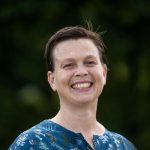
About Melina Bondy
Melina Bondy (formerly Sister Ocean) is a queer, white settler honored to live on the colonized land originally named Tkaronto. After studying with True North Insight in Ontario, Canada, they ordained as a monastic under Thich Nhat Hanh in 2012 and spent nine years in robes before returning to lay life in 2021. They’re now looking to share the gift of the monastery with a broader community with a Master’s in Buddhist Spiritual Care from the University of Toronto as well as training in Somatic Experiencing. To learn more go to www.melinabondy.com
Meeting Mugwort
Meeting Mugwort
I have often marveled at the depth of knowledge our ancestors possessed of the natural world. How did they first learn which plants were edible or discover their medicinal properties?
We modern humans have been conditioned to believe knowledge can only be grasped by our intellect. We have forgotten there are other ways of knowing.
Researchers have recently started to confirm what the ancients already knew: our living world is underpinned by a complex communication network. But how do we access it? Sometimes, we are fortunate enough to meet a new friend willing to be our guide.
I moved to Finland a few years ago in the autumn, just in time to see the fall colors fade. The snow fell, the birds left, and the plants went dormant. For six months, it felt like the whole world was hibernating. By the end of March, while the rest of Europe celebrated spring, I walked out my door every morning eyeing the piles of snow, and secretly wondering if winter would ever end. Suddenly, by mid-April, the lakes unfroze! The birds began returning, butterflies appeared, and small buds began to swell on the tips of the trees. Spring had arrived!
While I had appreciated the meditative stillness of winter, my heart overfilled with the prospect of life returning to the land. I spied my first wildflower, a cheerful patch of coltsfoot warmed in the gravel beside the road. Soon after, a beautiful purple flower burst forth from the forest floor. I immediately went to work trying to identify it. I learned it was called liverwort. “What a terrible name for such a beautiful flower,” I thought. “I’ll call it by its Latin name instead, Hepatica sounds much more regal.”
Practically every day, a new wildflower bloomed. After months of living in a monochromatic landscape, this extravagant display moved me beyond reason. I was determined to meet every flower. I spent hours trying to decipher field guides. I began to feel desperate, worried I would miss out on this visual feast. Many flowers were already fading and disappearing before I had a chance to identify them.
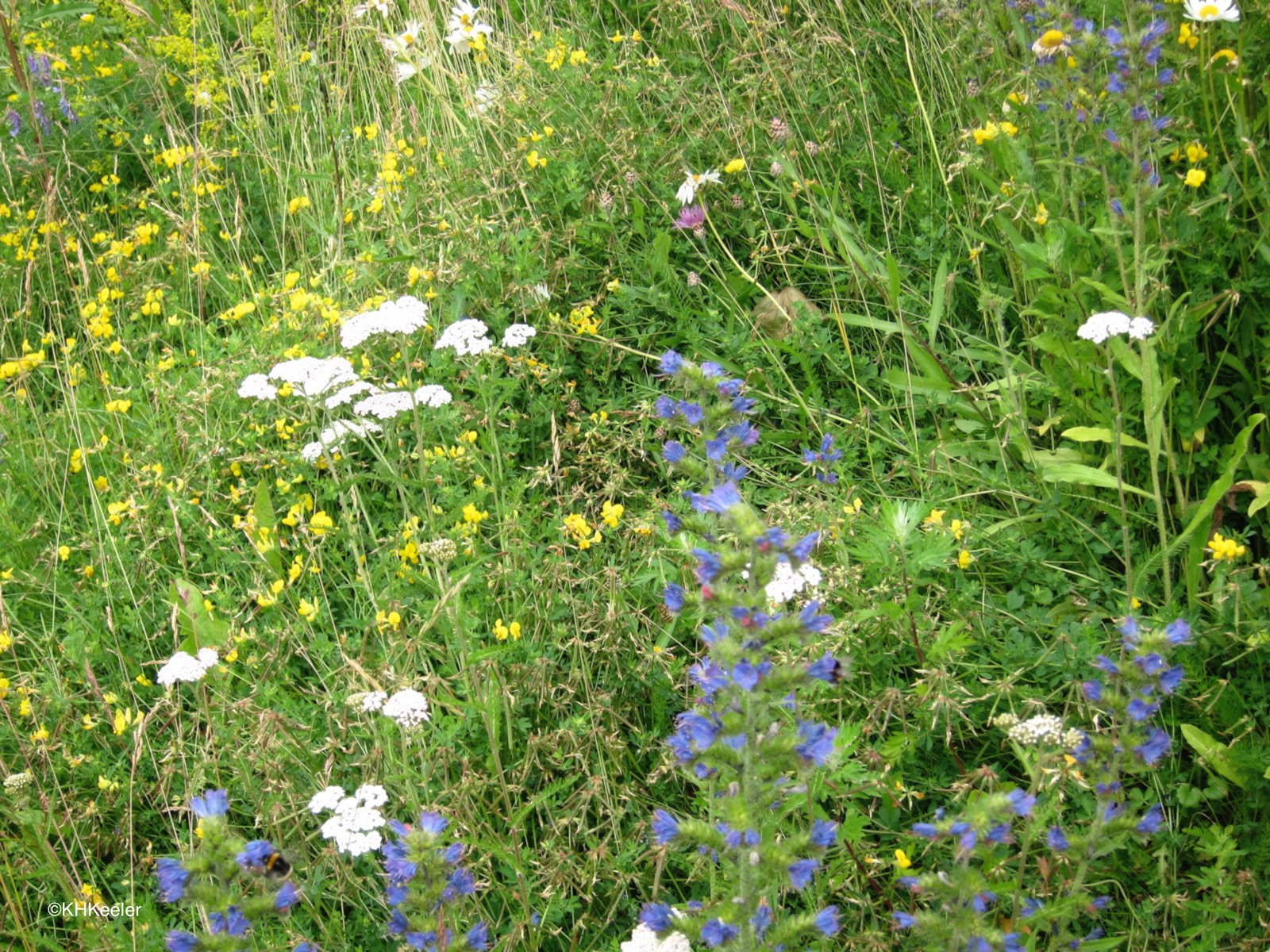
Incredibly, I had gone from feeling immense joy at the sight of these delicate blossoms to feeling pressured and frustrated by the fleeting and ephemeral nature of a Finnish spring. I was grasping, trying to hold on to all this beauty in the only way my modern mind knew how—by naming and cataloging.
The final straw came one morning while I was walking my dog. I was squatting down in a gully along the path with my nose just inches from the ground counting the petals on a microscopically small pink flower. “Wow, cute!” I called to my partner who was far ahead of me, waiting patiently. “Did you see this little guy?” Before he could answer, I felt a tug on the leash, and lifted my head to see what my dog was up to. To my surprise, he wasn’t trying to chase a squirrel. Instead he was looking at me with a baleful look. His message was clear, he was fed up with my flower identification obsession! I stood up and started walking. I had been approaching nature all wrong.
I announced to my partner “I’m going to quit fixating on plant identification. Honestly, even if I’m able to recite every scientific name—so what? It doesn’t mean I actually know the plant.” With a sigh, I continued, “It’ll take years to truly know these plants, so I might as well relax.”
My partner smiled and tried to hide his relief. My spring fever had finally broke. That night as I lay in bed, just before I drifted off to sleep, a ghostly vision appeared in my mind’s eye. Starting from the base, and slowly moving up the stem, the illuminated silhouette of a plant danced before me. It lifted its feathery leaf to show me the distinctive underside, and showed me how its flower heads formed a spike. I recognized the plant as common mugwort, which grows in abundance in our lower field. It’s often classified as an invasive weed, but in antiquity, it was recognized as a sacred plant everywhere it grew. This plant used to communicate with humans regularly. It was now lifting a slender tendril of friendship to me. I extended my greetings to the ghostly plant apparition, and it slowly faded away. Then I faded off into a contented sleep.
Regularly, throughout the rest of the season, similar plant visions appeared to me before I slept. Some plants I knew, but most were strangers. A few, like Mugwort, visited often. A subtle shift was taking place in my relationship to these plants. I quit walking around with a guidebook. Rather, the plants became my guide. I was naturally becoming more attentive to the small details of their lives, as if they were ushering me into a hidden world.
The plant world wants to communicate with us just as much as we want to communicate with them. But because we’ve forgotten their language, we’ve become deaf to their gentle greetings.
What shifted in me to make space for this simple communication was a softening. Instead of striving to grasp the knowledge out there, I relaxed. I learned that earth wisdom penetrates through osmosis.
We are each like individual seeds—a packet of potential enclosed in a hard shell. The outer seed coat protects the embryo until conditions are favorable for germination. But this protection is also a form of isolation. We have to shed our separateness before we can push our roots into the soil and join the ancient network of our ancestors.
Many seeds need prodding before they’re willing to give up the safety of their shells. Some must survive fire, freezing or floods before they’re ready to let go and germinate. The earth doesn’t coddle her children. Perhaps she is trying to tell us conditions are favorable, and it’s time to reconnect and grow.
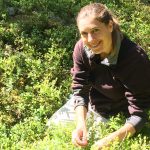
About Tracy Wulfers
Originally from the Pacific Northwest of the United States, Tracy has lived and worked across the world. She has a background in sustainable development and social and environmental justice work. She has worked with Sarvodaya in Sri Lanka and is the co-founder of Ojoba Collective, a social enterprise supporting women producers in Ghana for nearly 20 years. More recently, she helped create The Climate Smart Training Programme, an educational project helping farmers in the drylands of West Africa reclaim climate-resilient and indigenous farming practices.
She has studied Buddhism for over 20 years, under the lineages of Thich Nhat Hanh and Ajahn Chah. She has been fortunate to spend time immersed in wild places and diverse cultures (both human and non-human), which has greatly shaped her relationship to the world.
She lives and works on a small farm in southern Finland, where she is repeatedly humbled by the challenges of growing food in northern climates.
Toward a Global Wellbeing Mindset
Toward a Global Wellbeing Mindset
“We cannot solve our biggest problems if we do not come together.
It is not only about institutions or processes.
It is in the first instance about our mindsets.”
– UN Secretary General Antonio Guterres1
Happiness, Wellbeing and Peace
What do we all have in common? We want to be well—that is to be happy, healthy and to live in peace. In fact, the search for happiness seems to be core part of human’s nature, with Aristotle describing happiness as the end goal of every person.2
The pursuit of happiness even has its place in the United States Declaration of Independence dating from 1776. More recently, in the resolution adopted by UN General Assembly in 2011,3 all countries recognized happiness as a fundamental human goal, calling for “a more inclusive, equitable and balanced approach to economic growth that promotes the happiness and well-being of all peoples.” Consequently, 20th March has been declared as the International Day of Happiness.
Despite the rising interest in making happiness a personal and policy goal, it seems that today we are at a crossroads. The numbers of crises, from climate to COVID, and symptoms such as heatwaves, floods, burn-out and depression have increased dramatically. These are wake up calls. Do we really want to continue with business as usual? Or do we want to pause for a moment, reflect, and envision how we might change course? Shifting our mindsets, I argue, plays a key role in creating a better and happier future.
What are Mindsets?
Mindsets frame our thinking, which in turn determine our feelings, decisions and actions. Therefore, mindsets shape our behaviors, experiences and life journeys. At the individual level, a mindset “reflects personally distinguishable attitudes, beliefs and values, which influence one’s ability to learn and lead, and to achieve and contribute”.4 At the collective and global level, mindsets affect how we interact amongst each other, how we run our societies and economies, how we deal with nature, environment and the climate. Largely unconsciously, mindsets influence all our personal and collective actions, policies and goals.
I have found, through my research, professional practice and personal experience, that mindsets play an important role in human development at the individual, collective, and global level. It is estimated that some 95% of our mind is subconscious,5 therefore it is a game-changer to become aware of our mindsets in order to be able to make the changes we want.
“If we want to have a better and happier future,
now is the time to examine the mindset of our present generation.”
– H.H. Tenzin Gyatso, the 14th Dalai Lama6
The Need for a Mindset Shift
Based on my qualitative research conducted over the last four years with dozens of thought leaders and development practitioners around the world, it became evident that shifting mindsets is the key catalyst to achieve sustainable health, peace, wellbeing and happiness.7 We have a choice. We can remain stuck in our ways, or change our mindset thereby redirecting our life. Collectively this means that through changing our mindsets, thinking and actions, we can change the course of humanity.
In systems thinking and leadership, shifting mindsets is considered as the highest leverage point to change a system, even higher than policies and goals. For instance, Donella Meadows argued that “because mindsets and paradigms guide behaviors, changing them can have a profound impact… People who manage to intervene in systems at the level of paradigm hit a leverage point that totally transform systems.”8
Therefore, for us to overcome the multiple crises we are currently experiencing at the global level, and to achieve sustainability and regeneration, we need a mindset shift:
- from blaming others to taking self-responsibility
- from imposing quick fixes to co-creating solutions
- from quantitative to qualitative growth
- from GDP obsession to wellbeing of people and planet
- from materialism to holism
What is Wellbeing?
In simple terms, wellbeing is defined as “the state of feeling healthy and happy.”9 Wellbeing means ‘being well’ and healthy in multiple dimensions. These include at least the following dimensions: physical, intellectual, environmental, emotional, financial, social, spiritual, and occupational (as illustrated below). Going beyond ourselves, wellbeing applies to our families and communities, the environment, climate and planet.
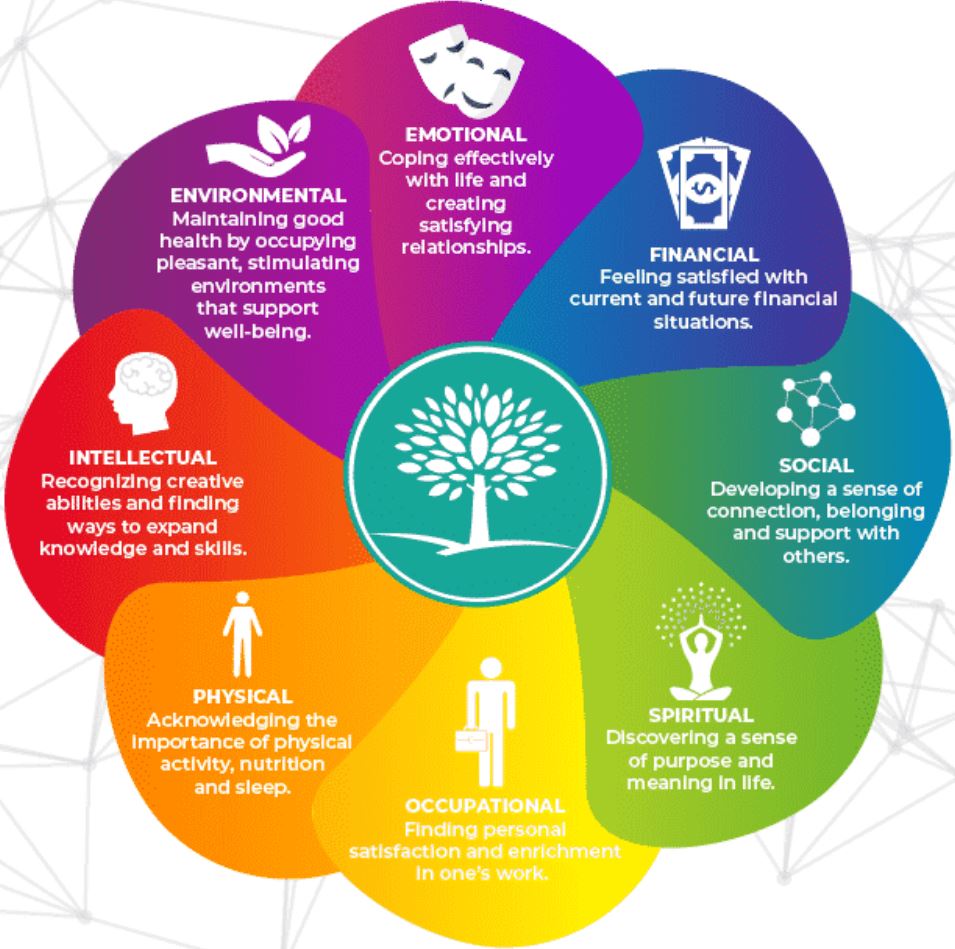
Figure 1: The eight Dimensions of Wellbeing 10
What is a Wellbeing Mindset?
A wellbeing mindset is a frame of thinking that fosters wellbeing in a holistic manner. This means “being well” in all the aforementioned inner and outer dimensions. Following my earlier article ‘The Sustainable Development Goals Begin with Mindset’ in 2020, I define a wellbeing mindset as “the whole of attitudes, beliefs, and values of a person or group of people that foster wellbeing. Wellbeing relates to a person, group of people, the whole of humanity, other sentient beings such as animals, and planet Earth.”11 The wellbeing mindset’s spheres of influence are illustrated in the following figure.
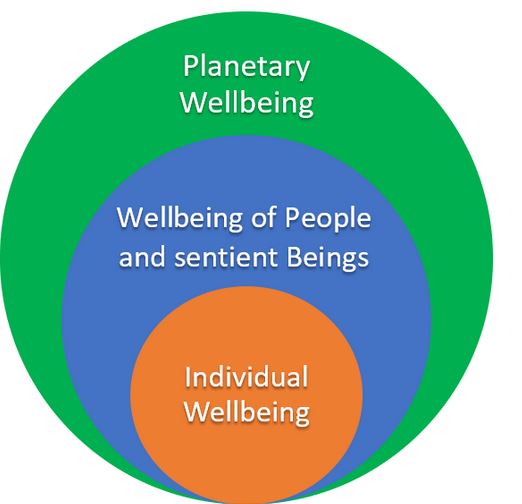
Figure 2: Wellbeing Mindset’s Spheres of Influence
Examples
Expanding our awareness and opening our mind and heart towards a wellbeing mindset is possible at different levels, be it individual, collective or global. For example, after a life-threatening motorbike accident in 1997, I began a quest for meaning, transformed my mindset and fundamentally changed my life. I went beyond my earlier pursuit of money, materialistic wealth, and career success towards following my heart. I have changed my career and joined social causes with NGOs and the United Nations. Now I appreciate the interdependence of life, universal spiritual wisdom of traditions around the world, and bridging science and spirituality.
A national example of a wellbeing mindset can be found in the Kingdom of Bhutan. The Himalayan country notably declared Gross National Happiness (GNH) to be more important than Gross Domestic Product (GDP).12 Bhutan has been heralded as a leading climate champion, absorbing more carbon emissions with its forests than it emits.13 During COVID, Bhutan’s holistic approach of putting people first has been a global success story with almost universal vaccination cover and close to zero deaths.14
While Bhutan has its own share of challenges, GNH fosters wellbeing of all sentient beings and planet, and thus is an outstanding source of inspiration for the mindset shift required to create a more harmonious economy and way of living. Promisingly, more countries are orienting their policies towards wellbeing, such as Canada, Finland, Iceland, New Zealand, and Scotland.15
What can we do?
All individuals and organizations play a role in creating wellbeing, and a better and happier life. Consciously or unconsciously, we all together co-create our collective journey. We can rethink, create, and implement a growth paradigm that goes beyond the economy, and that includes inner, collective, and planetary wellbeing. We can acknowledge the limits of quantitative growth on a limited planet and instead shift to qualitative growth.
Based on both the research I have undertaken and my own personal experience, I know that increased mindfulness is an excellent starting point. As Thich Nhat Hanh highlighted, “mindfulness is the most reliable source of peace and joy…and our continuation as a civilization and a planet depend on it.”16 Key suggestions helpful in cultivating a wellbeing mindset are summarized in the following acronym MANTRA:
Mindfulness: Take on a mindfulness practice.
Awareness: Expand your awareness with inner work & raise awareness about key issues.
Non-judging: Be compassionate and non-judging of yourself and others.
Think Positive: Be, think and act positively, as energy follows attention.
Real you: Be the real you by showing your true colors.
Aliveness: Enjoy and celebrate being alive by honoring life in all forms.
These practical tips are a beginning for growing individual and collective wellbeing, as well as a way of life harmonious with our Mother Earth.
For more information, please visit www.WellbeingMindset.org
References
[1] Guterres, Antonio (2021): UN Vision Statement
[2] Aristotle (ca. 350 B.C.E.): The Nicomachean Ethics
[3] UN General Assembly Resolution A/RES/65/309 (2011): Happiness: Towards a Holistic Approach to Development
[4] Buchanan, Ash (2017): The Benefit Mindset: The Psychology of Contribution and Everyday Leadership
[5] Zaltman, Gerald (2003): How Customers Think: Essential Insights into the Mind of the Market
[6] His Holiness 14th Dalai Lama (2019), Training the Mind
[7] For more details see www.researchgate.net/project/Towards-Holistic-Human-Development
[8] Meadows, Donella (1999): Leverage Points: Places to Intervene in a System
[9] Cambridge University (2021): Academic Content Dictionary
[10] Adopted from Hettler, Bill (1976): The Dimensions of Wellness; illustration from the Recovery Village (2021)
[11] Nagler, Jürgen (2020): The Sustainable Development Goals Begin with Mindset
[12] GNH is a holistic approach to development, see www.kosmosjournal.org/kj_article/we-become-what-we-think
[13] CNN (2018): What tiny Bhutan can teach the World about being carbon negative
[14] CNN (2021): Himalayan Kingdom of Bhutan vaccinates 90% of its Population
[15] Wellbeing Economy Alliance (2021): Wellbeing Economy Governments
[16] Kabat-Zinn, Jon (2013): Full Catastrophe Living
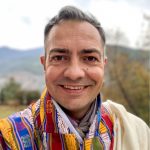
About Jürgen Nagler
Jürgen Nagler is an international development practitioner with 25 years’ experience successfully delivering global, regional and field projects with UNDP, the UN Global Compact, international NGOs and private sector.
Holding a first-class BA in Business Administration and MA in International Development, he is currently on sabbatical from UNDP, undertaking PhD research on the role of mindsets for transformative development & global wellbeing. #WellbeingMindset
The Indwelling Spirit
The Indwelling Spirit
Of the spiritual things we hold in common, the first and most obvious is the direct, daily experience of the super-conscious entity that dwells in every human body. This direct, daily experience is fundamental to any definition of “spiritual commons.” Beyond this, we hold everything in common that leads to this direct experience and everything that flows from it. Thus, the direct experience of humanity’s Indwelling Spirit is both the foundation of our spiritual commons and the source of all other spiritual commons, commonalities, etc. worthy of the name.
For example, we can also claim the four classical pathways leading to this direct experience as an important part of our spiritual commons. These are: the study of knowledge about the Indwelling Spirit, devotion to the Indwelling Spirit, actions known to be pleasing to this Spirit, and the technology of introspective self-transcendence that frees our attention so we might directly experience It. Interestingly, each of the first three classical pathways all include at least one introspective technique derived from the fourth. Also interesting is the fact that the regular, daily use of one of these proven techniques soon kindles a strong desire to embark on all of the first three (study, devotion, and right action).
What should we know about this introspective technology (i.e. the introspective techniques based on universal principles of human neurophysiology and consciousness)? We should know that, when one of these techniques is used, our attention naturally and effortlessly moves inward because it finds the pure, Indwelling Spirit more charming than either the busy surface or even the serene depths of our minds. We should know that, as proven over scores of generations, the daily use of a technique derived from this technology permanently fuses our surface minds and humanity’s Indwelling Spirit into the fully integrated state of mind called “Enlightenment,” “Divine Grace,” and the like.
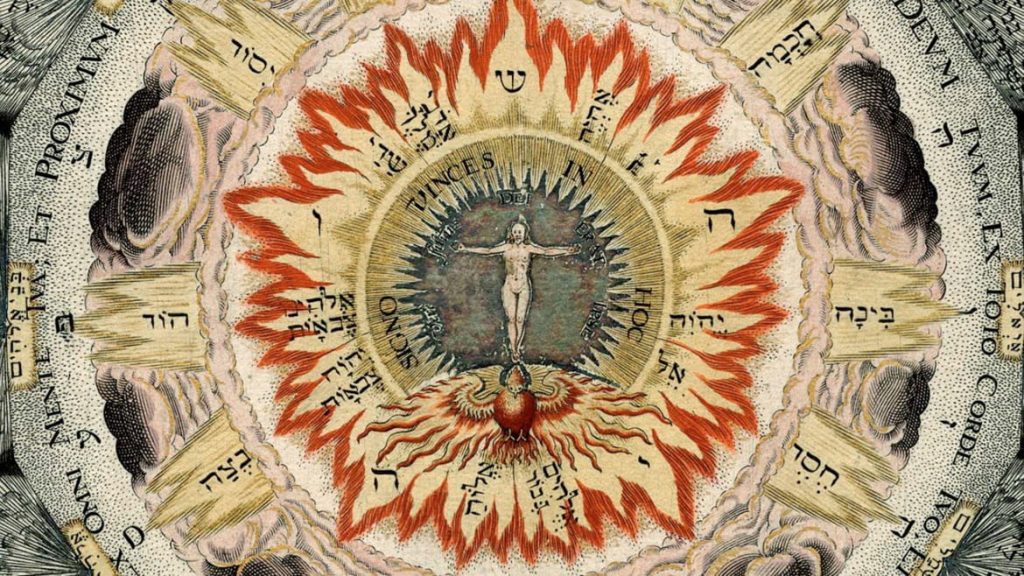
The qualities of thought, intention, communication, and action that flow from the regular, direct experience of the Indwelling Spirit are also an important and practical part of our spiritual commons. In the Indwelling Spirit, these qualities pre-exist as pure, undifferentiated, positive potential. However, when given the opportunity that a widening channel between our personal field of consciousness and the Indwelling Spirit provides, this potential flows in abundance into the pre-conscious area of our surface minds where our thoughts and intentions first form. It is here that the Indwelling Spirit’s pure, positive potential differentiates into eight qualities of thought, intention, etc. They are: steadiness; joyfulness; empathy, compassion, and generosity toward all others; and creativity, intelligence, and wisdom in the pursuit of our day to day goals and objectives.
All human virtues come from one or a combination of these eight qualities. This means that the direct, repeated experience of humanity’s Indwelling Spirit is the inexhaustible source of all that is good in human thought, intention, and action.
If the direct experience of the Dweller in our bodies; the four common paths to this experience; the eight positive core qualities that naturally flow from this experience; and the fully integrated state of mind that results from the daily repetition of this direct experience are our spiritual commons, what else can we claim? We can rightly claim that these eight qualities are so fundamental and powerful that, as they influence every choice we make in life, they bring us the happiness, interpersonal fulfillment, and material achievement adequate to our needs. We can rightly claim that, when a tiny minority of any community directly experiences humanity’s Indwelling Spirit, the positive change in that community’s social harmony and economic vitality becomes scientifically measurable. And finally, we can rightly claim that social harmony and economic vitality are the two most important enablers of environmental stability.
Thus, in the final analysis, our spiritual commons includes the direct, daily experience of the Divine Spirit Within and everything leading to and flowing from that experience. This includes the means of freeing our attention so we can become united with It each day. This includes the fully elevated, permanent state of mind that results from this daily experience. Our spiritual commons includes the pure positive potential that flows upward from the Indwelling Spirit into our personal field of consciousness where it manifests as humanity’s eight positive core qualities of thought and action. And, our spiritual commons includes the communal harmony and economic vitality that result from the increased expression of these qualities any time a small, threshold minority of the population begins to cultivate them directly from the Indwelling Spirit.
Is there anything else we can claim as our spiritual commons? We can claim a divine mandate to have this direct spiritual experience each day and encourage others to join us by any one of the first three classical paths (knowledge, devotion, or good works) provided it includes the daily use of the ancient, effortless technology of introspective self-transcendence. Why is this mandate part of our spiritual commons? Because the Indwelling Spirit is not indifferent to the suffering and discontent plaguing humanity. Because the direct experience of the Indwelling Spirit is the only light capable of illuminating and elevating every life. And, because the absence of this direct experience has lead to an intractable global matrix of suffering and discontent that is as compelling as it is unreal.
If we who dwell on topics like “humanity’s spiritual commons” do not bring the gift of divine potential to the point of manifestation in ourselves and others and to the point of consequence in our communities, who will oppose humanity’s growing matrix of darkness? Who will advance humanity across the threshold of our fourth global r/evolution and lead others by example into the next phase of our evolutionary ascendency? Who will spread the introspective technology that is the key to the removal of our personal and collective limitations; and who will save humanity from itself by re-harmonizing it with the natural world? Who will make it unnecessary for our increasingly Orwellian institutions to curtail our personal freedoms, drastically limit our standard of living, forcibly reduce our population, or some combination of all three? Who, but those of us who know that humanity’s spiritual commons can and will heal our planet.

About Eric Hutchins
Eric Hutchins has used a long-proven technique of introspective self-transcendence (Transcendental Meditation or TM, visit TM.org) for over five decades. He is the author of two books for use as workshop syllabuses. The first is Becoming Humanity’s Next R/Evolution, Five Practical Techniques to Enrich Our Lives, Sustain Our Communities, and Bring Global Peace. The second book is Nectar of the Eternal, Wisdom from the Bhagavad Gita for a Joyful Life and a Sustainable World. For questions and comments, contact eric@theNextRev.site.



